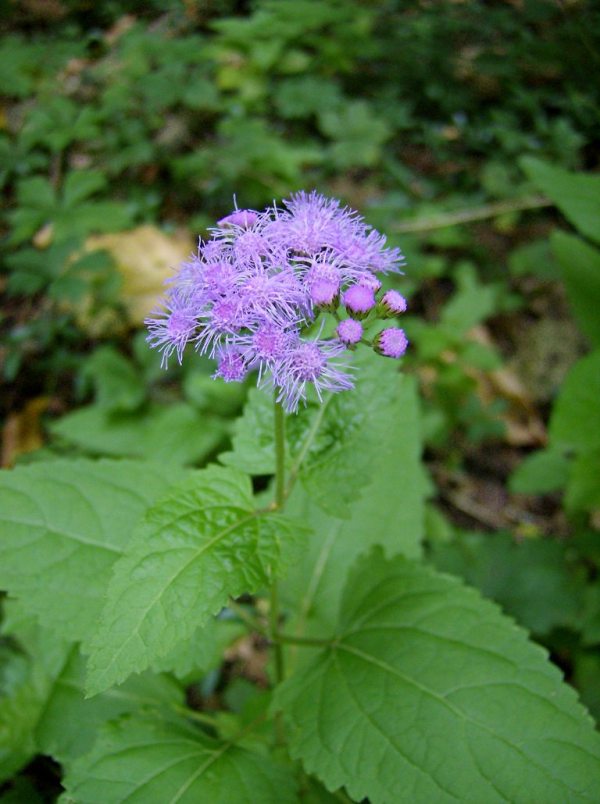 A charming flower, often cultivated. It likes a moist and somewhat shady location; these plants were blooming in Bird Park in Mount Lebanon at the beginning of September.
A charming flower, often cultivated. It likes a moist and somewhat shady location; these plants were blooming in Bird Park in Mount Lebanon at the beginning of September.
The genus Conoclinium was formerly included in Eupatorium, but was separated when Eupatorium was forced to sell off its superfluous species at fire-sale prices.
It is very difficult for a cheap digital camera to capture the delicate blue color of these flowers. The noticeable difference in color between the two pictures is mostly a figment of the camera’s imagination.
Gray describes the genus Eupatorium, the section Conoclinium (now regarded as a separate genus), and the species:
EUPATÒRIUM [Tourn.] L. THOROUGHWORT. Heads discoid, 3-many-flowered; flowers perfect. Involucre cylindrical or bell-shaped, of more than 4 bracts. Receptacle flat or conical, naked. Corolla 6-toothed. Achenes 6-angled; pappus a single row of slender capillary barely roughish bristles. —Erect perennial herbs, often sprinkled with hitter resinous dots, with generally corymbose heads of white, bluish, or purple blossoms, appearing near the close of summer. (Dedicated to Eupator Mithridates, who is said to have used a species of the genus in medicine.)
CONOCLÍNIUM (DC.) Baker. Receptacle conical; involucral bracts nearly equal, somewhat imbricated.
E. coelestìnum L. (MIST-FLOWER.) Somewhat pubescent, 0.5-1 m. high; leaves opposite, petiolate, triangular-ovate and slightly heart-shaped, coarsely and bluntly toothed; heads many-fiowered, in compact cymes; flowers blue or violet. — Rich soil, N. J. to Mich., Kan., and southw.

Just found your blog–very interesting! I grew up on Mayfair Drive in Mt. Lebanon and our lot backed on to what is now Bird Park. I spent many, many hours exploring, playing and walking to school through that woods as a child and I’m glad to see an example of its botanical resources!